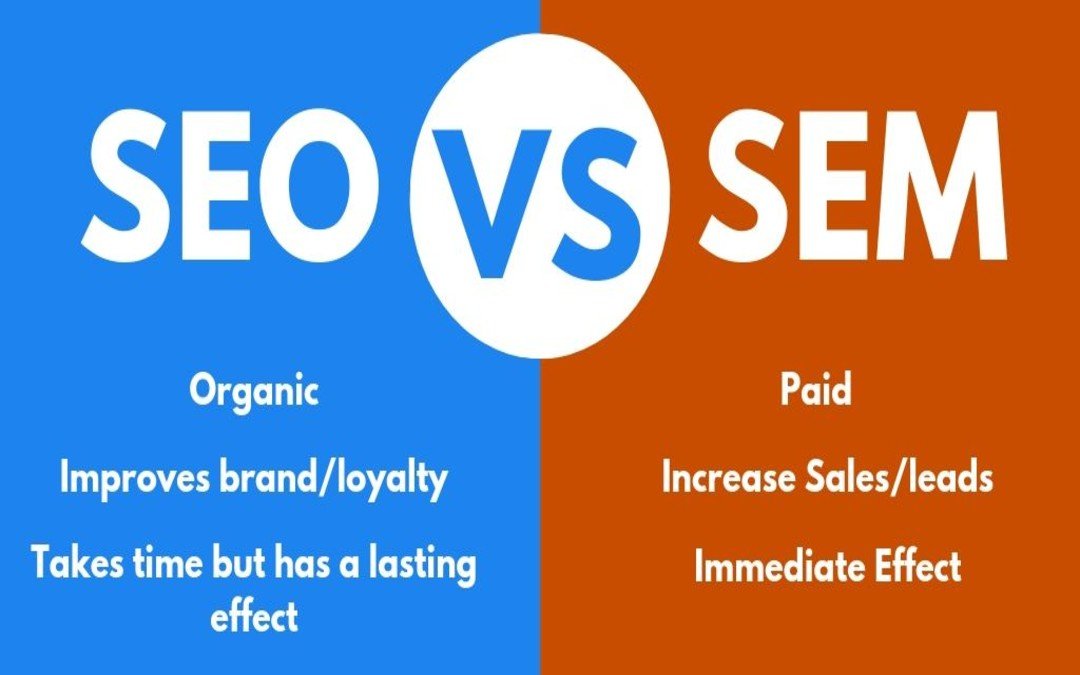SEO vs. SEM: Which Digital Marketing Tactic is Right for Your Business? – vs. SEM: Which Digital Marketing Tactic is Right for Your Business? This question is at the forefront of many business owners’ minds as they navigate the digital landscape. Both (Search Engine Optimization) and SEM (Search Engine Marketing) offer unique advantages, but understanding their differences and applications is essential for maximizing online visibility and driving traffic. As businesses continue to evolve in the digital age, knowing which tactic to employ can significantly impact growth and success.
With the rise of online commerce and digital communication, leveraging the right marketing strategy has never been more important. focuses on optimizing content to rank organically in search engine results, while SEM involves paid advertising to boost visibility. By exploring the benefits and challenges of each, businesses can make informed decisions tailored to their specific needs.
In today’s fast-paced world, where technology and connectivity play vital roles in our lives, the significance of effective communication cannot be overstated. Whether it’s in personal relationships, workplace interactions, or digital conversations, the way we convey our thoughts and ideas can significantly impact our connections with others. Communication is not just about exchanging information; it involves the art of understanding and being understood.
This complex interplay consists of verbal and non-verbal elements, each contributing to the meaning of our messages. For example, tone of voice, facial expressions, and body language all play crucial roles that can either enhance our communication efforts or lead to misunderstandings. Moreover, effective communication is foundational in various settings, from educational institutions to corporate environments. In schools, educators engage with students to foster an atmosphere conducive to learning.

The way teachers present information, provide feedback, and encourage dialogue can significantly influence student comprehension and enthusiasm. Similarly, in corporate settings, clear communication is essential for collaboration and productivity. Employees must convey ideas, share updates, and provide feedback in a manner that promotes teamwork and drives success.In the realm of digital communication, the landscape has evolved dramatically over the years.
With the rise of social media, instant messaging, and email, the way we interact has transformed. While these platforms offer incredible opportunities for connection, they also come with unique challenges. The absence of physical cues in written communication can lead to misinterpretation of tone or intent. Therefore, it’s essential to choose words carefully and be mindful of how they may be perceived by others.One of the keys to effective communication is active listening.
This skill involves fully engaging with the speaker, demonstrating empathy, and responding thoughtfully. Active listeners not only hear the words being said but also pay attention to the underlying emotions and intentions. This deep level of engagement can foster stronger relationships and ensure that conversations are productive.Furthermore, being aware of cultural differences is crucial in our increasingly globalized world. Different cultures have unique norms and expectations regarding communication styles.
For instance, while some cultures value directness and straightforwardness, others may prioritize subtlety and indirectness. Understanding these nuances can help us navigate cross-cultural interactions with sensitivity and respect.As we strive to improve our communication skills, it’s important to embrace feedback. Constructive criticism from peers, mentors, or even family members can provide valuable insights into areas for improvement. Whether it’s refining our public speaking techniques or enhancing our written communication, feedback is an essential tool for growth.
Another aspect of communication worth exploring is the role of technology in shaping our interactions. With the advent of video conferencing software, virtual meetings have become a norm in many professional settings. These platforms provide opportunities for face-to-face interactions, even when participants are miles apart. However, it’s important to be mindful of the potential technical glitches or distractions that can arise during virtual meetings.
To mitigate these issues, preparation is key—setting up the necessary technology and creating a conducive environment can enhance the overall communication experience.In addition to technology, the rise of artificial intelligence (AI) and chatbots has transformed customer service and communication in businesses. These systems can handle a wide range of inquiries and provide instant responses, significantly improving efficiency. However, while AI can streamline communication, it lacks the human touch that many customers crave.
Therefore, finding the right balance between automation and personal interaction is essential for maintaining customer satisfaction.Moreover, the significance of non-verbal communication is often underestimated. Our body language, eye contact, and gestures can convey messages just as powerfully as our words. In fact, studies suggest that a significant proportion of communication is non-verbal. Being aware of our own body language, as well as interpreting the non-verbal cues of others, can enhance our understanding and connection during conversations.In the context of personal relationships, effective communication is foundational to building trust and intimacy.
Sharing thoughts and feelings openly fosters a sense of belonging and understanding. On the other hand, poor communication can lead to misunderstandings, resentment, and conflicts. Therefore, investing time and effort into nurturing our communication skills can have a profound impact on our relationships with family, friends, and partners.Looking towards the future, the landscape of communication will continue to evolve. As new technologies emerge and societal norms shift, adapting our communication strategies will be essential.
Embracing a growth mindset and being open to learning will enable us to navigate these changes effectively.In conclusion, effective communication is a multifaceted skill that encompasses various elements, from active listening to understanding cultural differences. Whether in personal or professional settings, our ability to convey thoughts, ideas, and emotions plays a critical role in shaping our interactions. By continuously developing our communication skills and being mindful of our language and non-verbal cues, we can foster more meaningful connections with others.
As we embrace the changes brought about by technology, we must also remain committed to the human aspect of communication, ensuring that our interactions remain authentic and empathetic.



